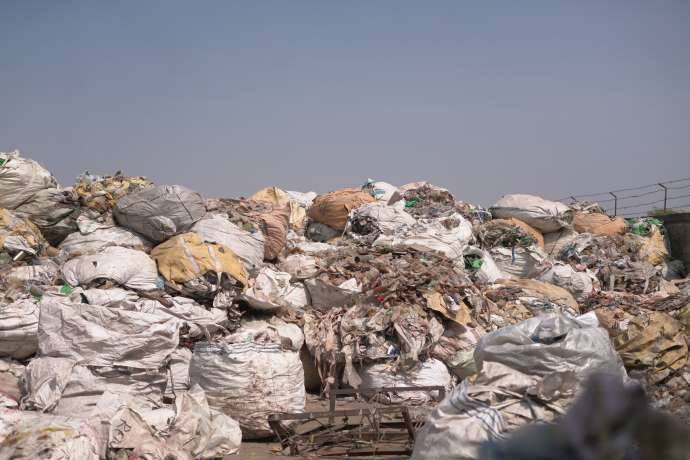Proper PET Strapping: Step-by-Step Usage & Application Guide
- Strong & Sustainable: PET strapping is a durable, rust-free, and recyclable alternative to steel—ideal for heavy loads.
- Right Tools Matter: Match your operation size with manual, battery, or automatic strapping tools for safe, efficient use.
- Secure Every Time: Check tension, seals, and load stability to avoid damage and improve safety.
PET (Polyethylene Terephthalate) strapping is a high-strength plastic banding material made from virgin or recycled PET. It is increasingly used as a replacement for steel strapping because it offers:
- High tensile strength — comparable to steel, suitable for heavy-duty loads.
- Flexibility and shock absorption — absorbs impact during transit.
- Corrosion resistance — unlike steel, it does not rust or stain products.
- Eco-friendliness — often produced from recycled materials and fully recyclable.
Where PET Strapping is Used
Industries across logistics, warehousing, and manufacturing rely on PET strapping for:
- Palletized goods — boxes, cartons, and fragile shipments.
- Building materials — bricks, timber, and steel bundles.
- Heavy industrial products — appliances, machinery, automotive parts.
Also Read: PET Strapping vs. PP Strapping - The Best Choice for Your Business
Choosing the Right PET Strapping for Your Needs
Selecting the correct PET strapping ensures maximum load security. Consider:
1. Load Weight: Heavier loads require wider, thicker straps.
2. Storage Conditions: UV-resistant PET strapping is ideal for outdoor storage.
3. Tensioning Requirements: Select the appropriate tools based on your volume and strapping method.
Also Read: 7 Essential Considerations Before Buying Industrial Strapping
PET Strapping Specifications (Typical Ranges)
| Strap Width | Typical Break Strength (kg) | Common Applications |
| 9 mm (3/8”) | 700–900 | Light cartons, small pallets |
| 12 mm (1/2”) | 1,200–1,800 | General palletizing |
| 16–19 mm (5/8”–3/4”) | 2,000–4,000 | Heavy materials, bricks, steel bundles |
Pro Tip: Always tension PET straps to around 40–60% of their break strength for optimal performance. For example, a strap rated at 1,800 kg should be tensioned to 720–1,080 kg working load.
Tools for PET Strapping
Depending on your operation size, different tools may be needed:
- Manual Tools (small scale): tensioner, sealer with metal seals, strap cutter.
- Battery-Powered Tools (medium scale): automated tensioning and friction weld sealing—faster, seal-free, more efficient.
- Automatic Strapping Machines (large scale): fully automated, consistent, and ideal for high-volume operations.
⚠️ Safety Reminder: Always wear gloves, safety glasses, and protective clothing when working with PET strapping.
Also Read: A Complete Guide to Choosing the Right FIBC for Your Business
Step-by-Step: How to Apply PET Strapping
Step 1: Prepare the Load
- Stack items evenly on a pallet.
- Use corner protectors to avoid strap damage.
- Ensure load is stable before strapping.
Step 2: Position the Straps
- Vertical strapping: secures tall loads.
- Horizontal strapping: prevents side shifting.
- Combination method: maximum stability for irregular or heavy loads.
Step 3: Tensioning
- Loop the strap around the load.
- Use a tensioner to apply correct force.
- Avoid under-tensioning (load shifts) or over-tensioning (strap damage).
Step 4: Sealing the Strap
- Metal seals: manual, but lower strength.
- Friction welding (battery tools): melts strap ends, achieving 75–80% joint efficiency.
- Heat sealing (automatic machines): strongest and most consistent option.
Step 5: Cutting & Securing
- Trim excess strap.
- Dispose of waste responsibly.
- Double-check tension and alignment before moving the load.
Quality Control & Maintenance
Inspection Checklist
✅ Tension test: firm, no sagging.
✅ Seal integrity: no loose or weak welds.
✅ Load stability: tilt or lift test confirms security.
Tool Maintenance
- Clean and lubricate tools regularly.
- Replace worn components promptly.
- Store PET strapping in dry, cool conditions, away from direct sunlight.
Get High-Quality PET Strapping Solutions from Langgeng Jaya Group
At Langgeng Jaya Group, we provide durable, eco-friendly PET strapping solutions designed for industrial use. Whether you need manual, battery-powered, or automatic strapping, we have the right products for your business.
Contact us today to get expert recommendations for your cargo security needs!



